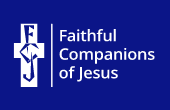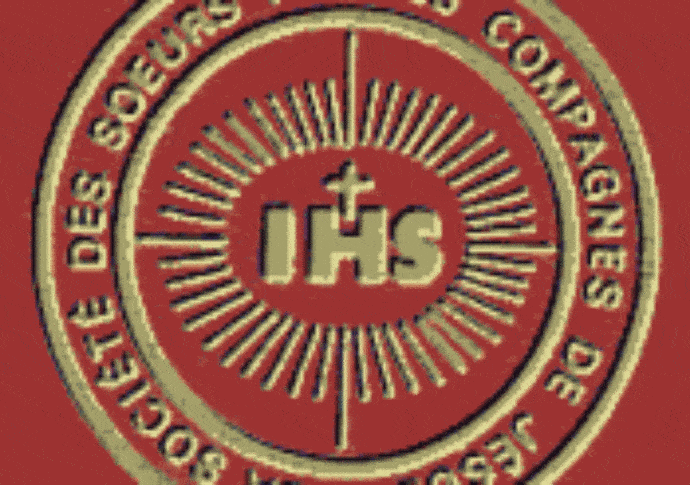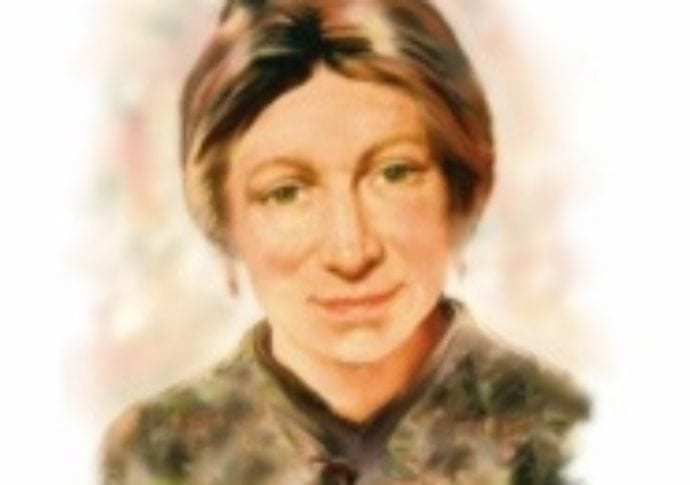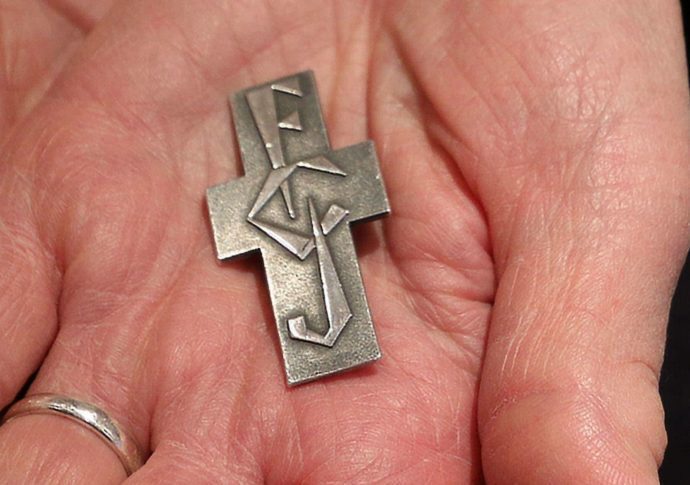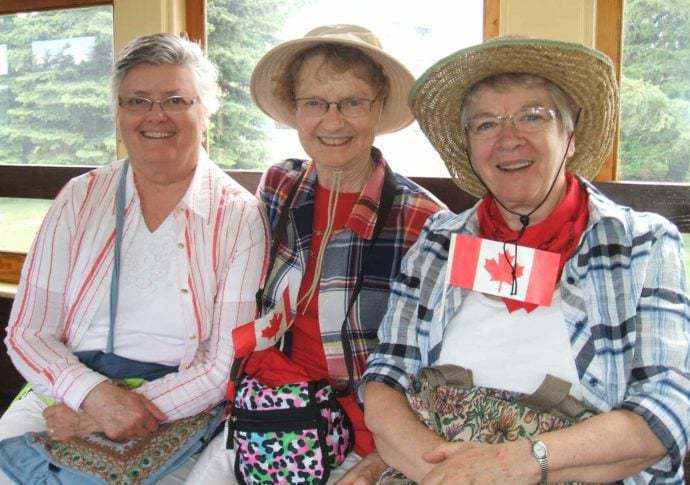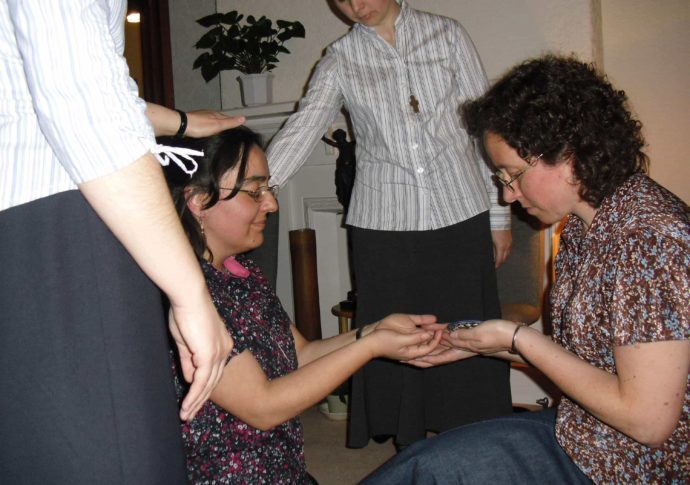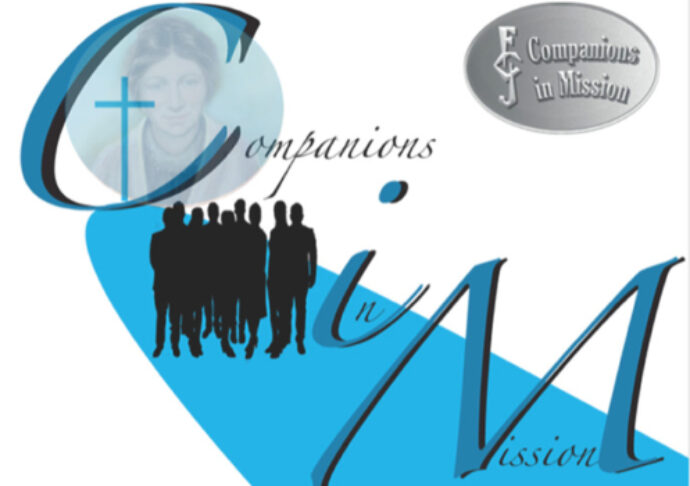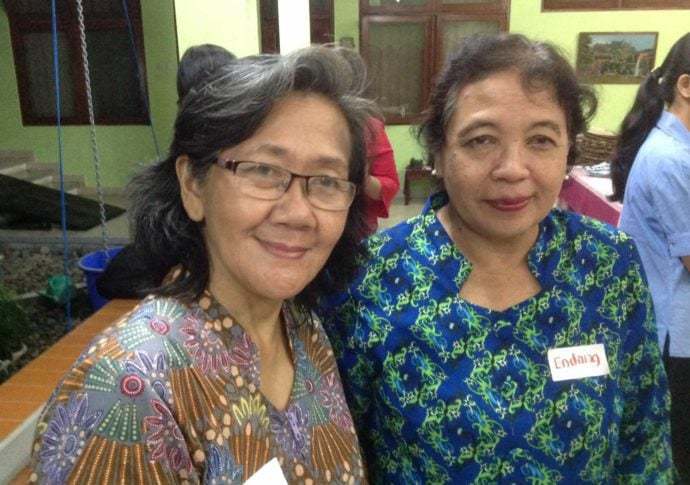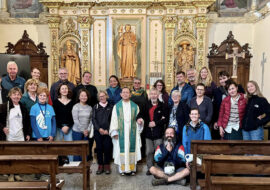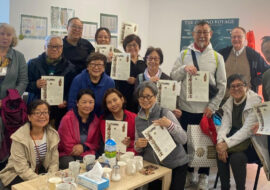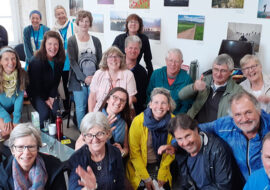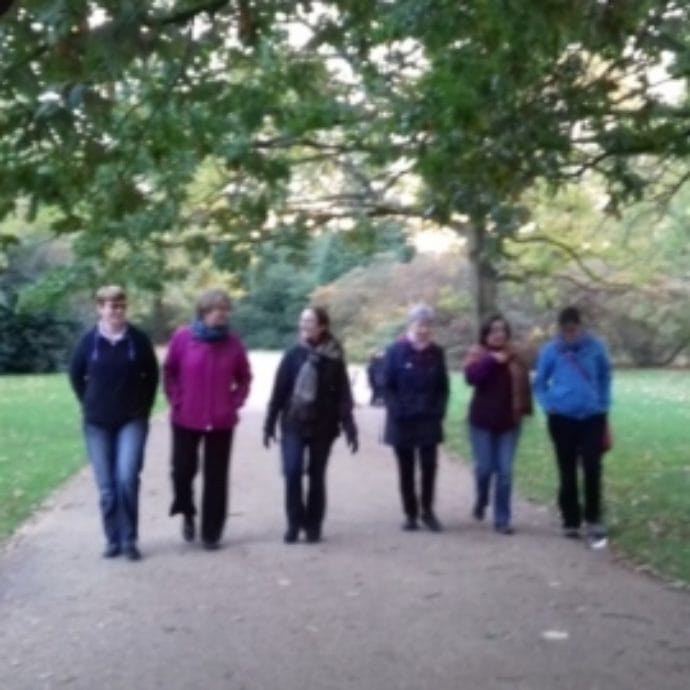Camino Companions is an FCJ project in Santiago de Compostela to offer pilgrims a space to articulate and find meaning at the end of their Camino. One of the project volunteers, William Griffiths has been a Camino Companions volunteer in two occasions and he shared his reflections in the August 2024 Bulletin of the Confraternity of Saint James (CSJ), which we reproduce here with permission. William is the current CSJ Librarian.
“We had the experience
but missed the meaning,
And approach to the meaning
restores the experience
In a different form…”
T.S.Eliot, The Dry Salvages, in Four Quartets
This account consists of an individual’s reflections on two sessions of working with the Companions. It is not an official statement by the Camino Companions.
Pilgrims arriving in Santiago will have a store of experiences gathered along the way, and the arrival is a time for celebration and for reflection on their meaning. There are teams of welcomers, in several languages, operating mostly in the(new) Pilgrims’ Office in Rua de Carretas. The Camino Companions are the English language service. In many ways, the Companions are continuing the pioneering work of the Amigos, the first welcome service to supplement the work of the regular staff of the Pilgrims’ Office. Founded in 2012 by Santiago resident John Rafferty, and backed by the CSJ and our Irish counterparts, and later other Anglophone Associations, and serving in the old Pilgrims’ Office, notorious for its long queues, the Amigos extended their welcome well beyond the ranks of English-speaking pilgrims, as symbolized by our dark blue T-shirts with “Welcome” written in several languages. One can read more in Bulletin 118, of June 2012. Circumstances changed, and the Amigos were disbanded. Other language groups have settled and joined the welcome process. The Germanophones may well have been first, and by tacit agreement are the first to give their translation of the opening announcement at a Pilgrims’ Mass. The Francophones are Webcompostella, an Association originally operating only on the Internet, as their name implies. (I wrote about them in March 2004, in Bulletin 85.) All these language groups come under the umbrella term Acogida Cristiana en el Camino, Christian Welcome on the Camino. Our T-shirts are no longer dark blue but light blue, with the shell motif of A.C.C.
 “Camino Companions” does not appear to be a protected term. Googling will reveal a group at St James’s church, Piccadilly, and a commercial provider of tours on the Camino. Our Camino Companions, were set up by a Congregation of Sisters, the F.C.J., Faithful Companions of Jesus, who were founded by a Frenchwoman, Marie Madeleine d’Houët, in the 19th Century, and whose work has mostly been in education. In recent years, certain of the Sisters have made the pilgrimage and developed their service of welcome to other pilgrims. During the two times that I have been part of the Companions team, I’ve met Sister Katherine O’Flynn, who is Irish, and Sister Alicia Pérez, who is Spanish. Sister Katherine has held high office in the Congregation, and has a degree in Counselling Psychology from the Gregorian University in Rome. (“Were the lectures in Latin?”, I asked. “No, in Italian.”) Sister Alicia has a background in Computer Science, and spends much of the year as Chaplain at Manchester University (where she is well known to CSJ members in Ultreia Mancunia.) I also met a novice in the FCJ, who had just walked the Camino Francés when she joined the team for a few days. They are joined by volunteers, usually for a fortnight, for whom accommodation is obtained in Santiago. Only for Catholics, then? Far from it. My colleagues this year were two American psychologists, ordained ministers in a Protestant church.
“Camino Companions” does not appear to be a protected term. Googling will reveal a group at St James’s church, Piccadilly, and a commercial provider of tours on the Camino. Our Camino Companions, were set up by a Congregation of Sisters, the F.C.J., Faithful Companions of Jesus, who were founded by a Frenchwoman, Marie Madeleine d’Houët, in the 19th Century, and whose work has mostly been in education. In recent years, certain of the Sisters have made the pilgrimage and developed their service of welcome to other pilgrims. During the two times that I have been part of the Companions team, I’ve met Sister Katherine O’Flynn, who is Irish, and Sister Alicia Pérez, who is Spanish. Sister Katherine has held high office in the Congregation, and has a degree in Counselling Psychology from the Gregorian University in Rome. (“Were the lectures in Latin?”, I asked. “No, in Italian.”) Sister Alicia has a background in Computer Science, and spends much of the year as Chaplain at Manchester University (where she is well known to CSJ members in Ultreia Mancunia.) I also met a novice in the FCJ, who had just walked the Camino Francés when she joined the team for a few days. They are joined by volunteers, usually for a fortnight, for whom accommodation is obtained in Santiago. Only for Catholics, then? Far from it. My colleagues this year were two American psychologists, ordained ministers in a Protestant church.
So, what do the Companions, and their counterparts in other languages, offer pilgrims? There are nowadays four designated Pilgrims’ Masses a day in the Cathedral. Before each, a Companion (and counterparts) makes an introductory announcement. The (new) Pilgrims’ Office was previously a home for old people, and has a chapel with some beautiful murals. This is used for Mass in French and in English. (Other languages use other churches around the city: the Germans are at the small historic church of San Fiz, near the market.) Here we have the benefit of Mass celebrated by the Anglophone Chaplain, Fr Manny Domingo, a Salesian, from the Philippines, and, of course, a pilgrim. A Mass here is a first opportunity to reflect on, and share with others, the experiences of one’s pilgrimage. Fr Manny’s homilies will often describe the emotions, joyful and otherwise, that a pilgrim encounters. Then we move upstairs to Room 6. All the rooms in the Pilgrims’ Office are named for major figures in the 20th Century pilgrimage revival. Our room is named after Antonio Viñayo, the scholar-Abbot of San Isidoro, León. Conversation continues over tea (imported, ideally, from both the UK and Ireland). We have another session in the afternoon, quieter and deeper. In the evening we offer a “spiritual tour” around the outside of the Cathedral. Why “spiritual”? Well, we’re not qualified guides or art historians, but we do try to deal with St James in the Scriptures and the link with the richness of the Santiago tradition.
Volunteering as a Companion can be, like volunteering as an hospitalero, a way of continuing to use whatever qualities one has acquired in one’s own pilgrimages – but with the difference that the hospitalero is assisting a pilgrim still making a pilgrimage; the Companion is part of the pilgrim’s process of completing and “wrapping up” the pilgrimage. When I was an hospitalier for the first time, at the Hospitalité St-Jacques in Estaing (on the Le Puy route, now transferred to Espalion) I was taught not to ask why a pilgrim was making the pilgrimage. (The answer might be that he’d just come out of prison.) As a Companion for the first time, I heard colleagues asking this question, which jarred at first, until I grasped the difference between pilgrimage-in-progress and pilgrimage completed. Within a few days, the pilgrim will have left the pilgrimage environment. Today may be the last opportunity to ask the question, which may (or may not) be welcome. “If not now, when?”
Read more about Camino Companions on this website for information about where and when to find us, follow Camino Companions on facebook, or get in touch at caminocompanions @ gmail.com.
